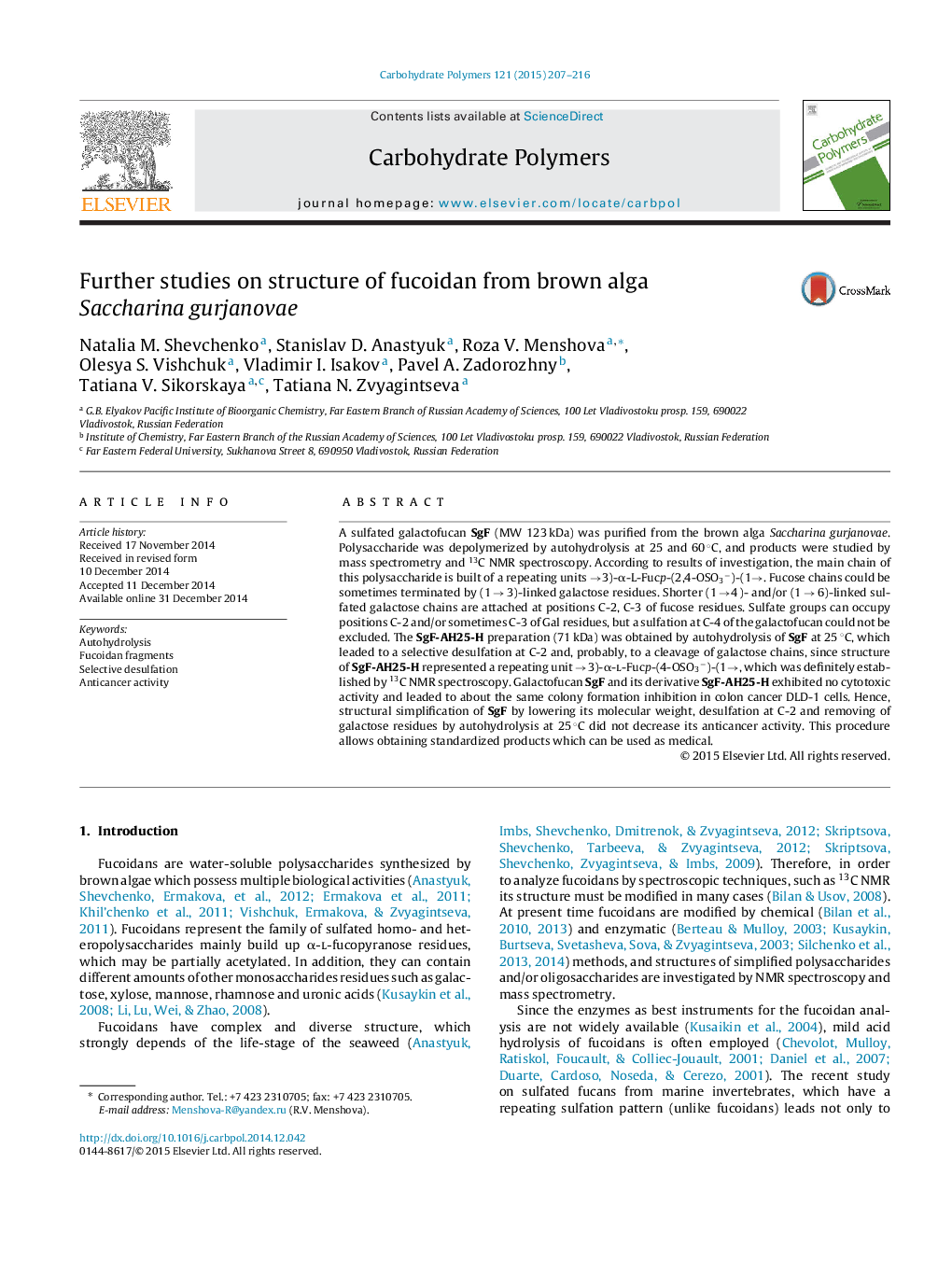| Article ID | Journal | Published Year | Pages | File Type |
|---|---|---|---|---|
| 1383256 | Carbohydrate Polymers | 2015 | 10 Pages |
•Structure of galactofucan SgF from Saccharina gurjanovae was established.•SgF was depolymerized by autohydrolysis, and structure of products was studied.•Autohydrolysis of SgF at 25 °C leaded to a selective desulfation at C-2.•SgF and its derivative inhibited colony formation of colon cancer cell DLD-1.
A sulfated galactofucan SgF (MW 123 kDa) was purified from the brown alga Saccharina gurjanovae. Polysaccharide was depolymerized by autohydrolysis at 25 and 60 °C, and products were studied by mass spectrometry and 13C NMR spectroscopy. According to results of investigation, the main chain of this polysaccharide is built of a repeating units →3)-α-L-Fucp-(2,4-OSO3−)-(1→. Fucose chains could be sometimes terminated by (1 → 3)-linked galactose residues. Shorter (1 →4 )- and/or (1 → 6)-linked sulfated galactose chains are attached at positions C-2, C-3 of fucose residues. Sulfate groups can occupy positions C-2 and/or sometimes C-3 of Gal residues, but a sulfation at C-4 of the galactofucan could not be excluded. The SgF-AH25-H preparation (71 kDa) was obtained by autohydrolysis of SgF at 25 °C, which leaded to a selective desulfation at C-2 and, probably, to a cleavage of galactose chains, since structure of SgF-AH25-H represented a repeating unit →3)-α-l-Fucp-(4-OSO3−)-(1→, which was definitely established by 13C NMR spectroscopy. Galactofucan SgF and its derivative SgF-AH25-H exhibited no cytotoxic activity and leaded to about the same colony formation inhibition in colon cancer DLD-1 cells. Hence, structural simplification of SgF by lowering its molecular weight, desulfation at C-2 and removing of galactose residues by autohydrolysis at 25 °C did not decrease its anticancer activity. This procedure allows obtaining standardized products which can be used as medical.
